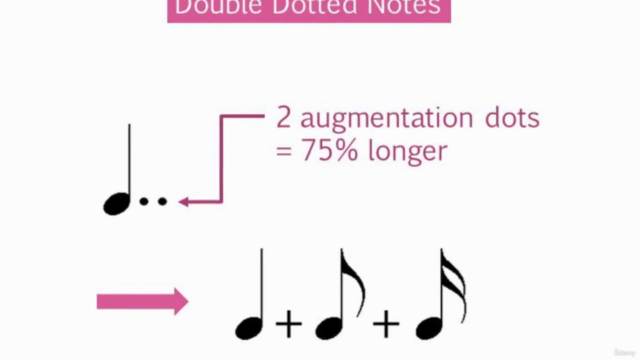Trinity Grade 6 Music Theory

Why take this course?
🎼 Acomplete Course Covering the Trinity Grade 6 Music Theory Syllabus 🌟
Introduction to Trinity Grade 6 Music Theory 📘
Embark on a comprehensive journey through the realm of music with our Trinity Grade 6 Music Theory video course. This meticulously crafted series is designed to align perfectly with the Trinity syllabus, ensuring that all the necessary topics and concepts are covered in detail. Whether you're preparing for an exam or simply looking to enhance your understanding of music, this course will provide you with a solid foundation and the skills needed to succeed.
Course Highlights ✨
-
Rhythm mastery: Dive into the world of complex rhythms including demisemiquaver triplets (32nd note triplets), double dotted notes and rests, duplets, hemiola, swung quavers, and more! Gain a deep understanding of the textures in music, from homophonic to polyphonic, imitative, thick or dense, and thin or transparent. You'll also explore various forms like binary and ternary, and uncover the roles of movements and preludes.
-
Composers and General Knowledge: Immerse yourself in the Baroque period, where you'll learn about the influential composers such as J S Bach, Handel, Corelli, and many others who shaped this era.
-
Pitch Proficiency: Master all major and minor keys, understand the roles of the mediant, submediant, and leading note, and recognize diminished 7th chords and their enharmonic equivalents. You'll also learn to write chords in various inversions for SATB voicings and understand the significance of pedal points, harmonic sequences, cadences, and more!
-
Chord Writing and Harmony: From figuring bass to recognizing and writing augmented chords, intervals, pentatonic, blues, and Aeolian modes, you'll develop a robust command over harmony.
-
Creative Expression: Develop your skill in composing melodies using different scales, transposing music for various instruments, and identifying and implementing variations and decorations in music.
Course Breakdown 📋
Rhythm 🥁
- Demisemiquaver triplets (32nd note triplets)
- Double dotted notes and rests
- Duplets
- Hemolas
- Swung quavers
General Musical Elements 🎶
- Textures in music
- Forms: Binary & Ternary
- Movements and Preludes
Pitch, Chromaticism, and Modulation 🌈
- All Major and Minor Keys
- Mediant, Submediant, Leading Note
- Diminished 7th Chords and Enharmonic Equivalents
- Pentatonic, Blues, and Aeolian Modes
Harmony 🎵
- Figured Bass
- Augmented Chords
- Intervals
- Sequences
- Cadences
- Composing a phrase for a chorale/hymn in SATB voicings
Melody, Instrumentation, and Analysis 🎹
- Transposition of music for various transposing instruments
- Ranges of specific instruments like clarinet in A, recorders, saxophones, and more
- Melodic variation/decoration: Harmonic, melodic, dynamic, and textural
- Musical terms and symbols
Join Us on This Musical Adventure 🚀
With a focus on interactive learning, engaging video content, and practical exercises, this course is tailored to cater to both visual and auditory learners. Whether you're a beginner or an experienced musician looking to refine your skills, our Trinity Grade 6 Music Theory course will equip you with the knowledge and confidence to tackle any musical challenge that comes your way.
Enroll now and start your journey towards mastering Trinity Grade 6 Music Theory! 🎫✏️🎵
Course Gallery




Loading charts...